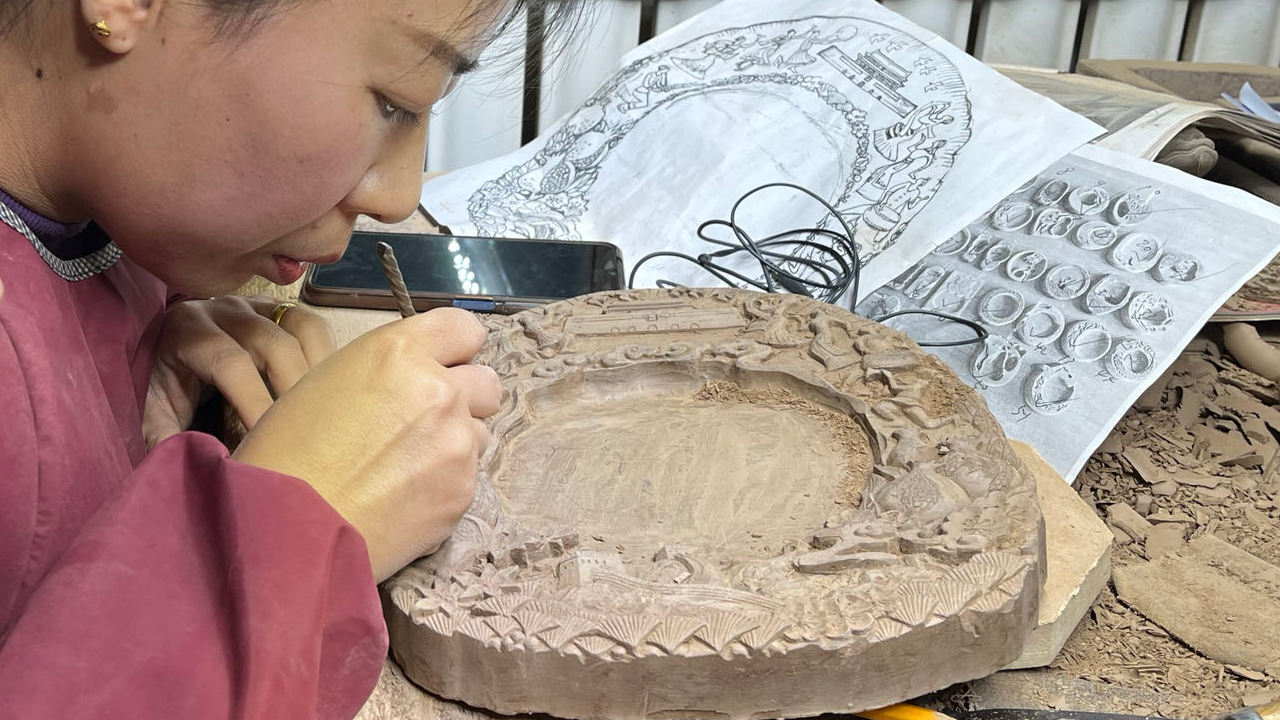The Jiangzhou Chengni Inkstone Research and Development Institute, nestled in Xinjiang County of Yuncheng in Shanxi Province, is a beacon of cultural preservation, focusing on a unique and revered element of Chinese calligraphy – the Chengni inkstone. This institute, part of a broader cultural park in the area, plays a crucial role in maintaining and celebrating an art form that has been a staple on the desks of literati and calligraphy enthusiasts through the ages.
The Unique Chengni Inkstones
Unlike the more commonly known She, Duan, and Tao inkstones, the Chengni inkstone is distinct for its primary material – river clay. The art of creating these inkstones dates back to the Tang Dynasty (618-907) and has been revived in recent years after waning in popularity during the Qing Dynasty (1644-1911). In 2008, the production techniques of the Chengni inkstone were officially recognized and protected as part of China’s national intangible cultural heritage.
A Cultural Journey at the Institute
Visitors to the institute are greeted by Lin Tao, a second-generation inheritor of the Chengni inkstone crafting skills. He leads them through an educational journey, explaining the comprehensive 10-month process of creating these inkstones, from sourcing clay from the Fenhe River to the final polished product. This experience provides a deeper appreciation for the inkstone, considered a cultural emblem of Xinjiang, Yuncheng, and the broader Shanxi region.
The Nine-Step Crafting Process
The intricate process of making Chengni inkstones involves nine steps: selecting the clay, filtrating, depositing, molding, baking, carving, firing, waxing, and polishing. Each step is a testament to the craftsmen’s dedication and skill. The initial filtration process, where muddy water is stirred and sieved to collect wet clay, is particularly fascinating. The subsequent patting of the clay 500 times to remove air bubbles showcases the meticulous attention to detail required in this craft.
The Art of Carving and Firing
Carving is highlighted by Lin Tao as the most crucial part of the process. Craftsmen painstakingly carve relief patterns into clay blocks, which are later used for ink containment and impressions on printable surfaces. The inkstones are then fired in traditional kilns, a process that further solidifies their form and beauty.
Showcasing and Preserving Tradition
The institute not only functions as a workshop but also as a cultural showcase, with polished inkstones neatly displayed, reflecting the culmination of the craftsmen’s labor. These inkstones, available for purchase, continue to adorn writing desks in China and beyond, symbolizing the timeless elegance of Chinese calligraphy.
In summary, the Jiangzhou Chengni Inkstone Research and Development Institute is more than just a center for preserving a traditional craft; it is a cultural haven that connects the past with the present. It stands as a proud reminder of China’s rich artistic heritage, drawing visitors into the captivating world of inkstone craftsmanship, an integral part of the country’s artistic and cultural identity.
READ MORE:
